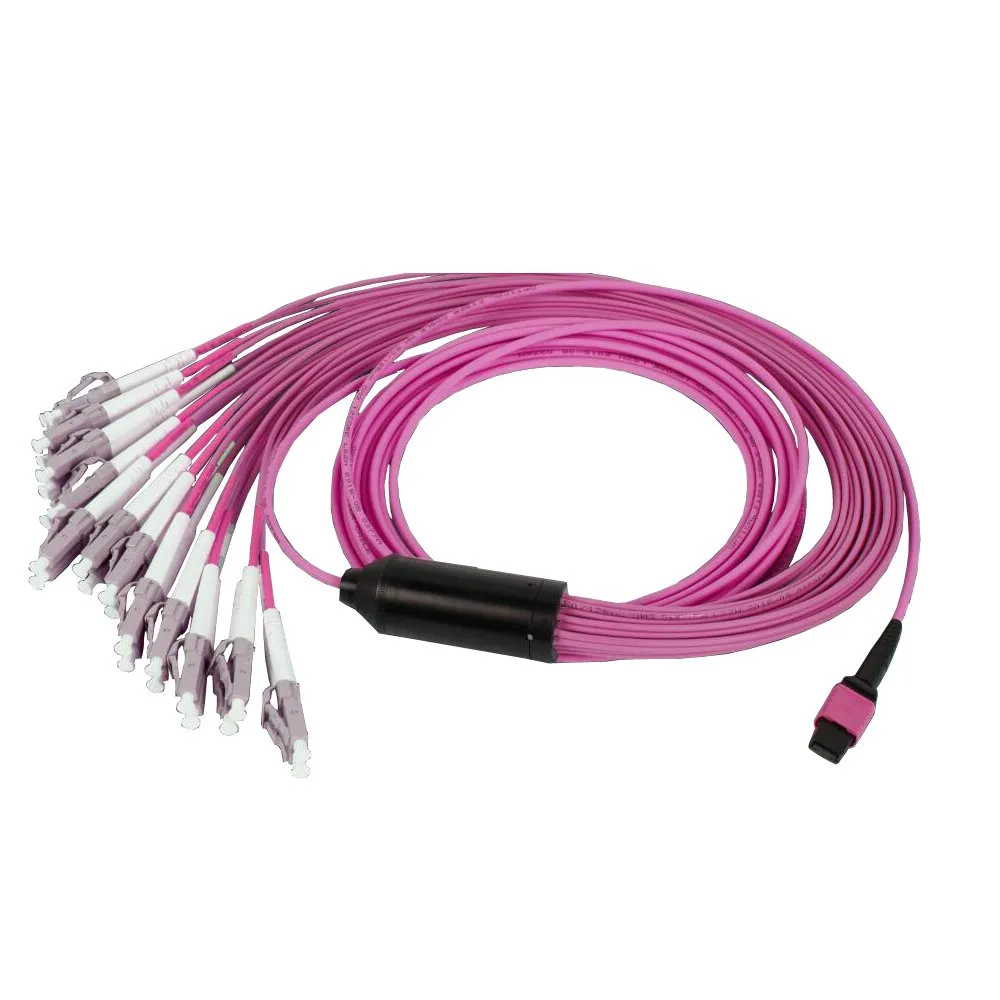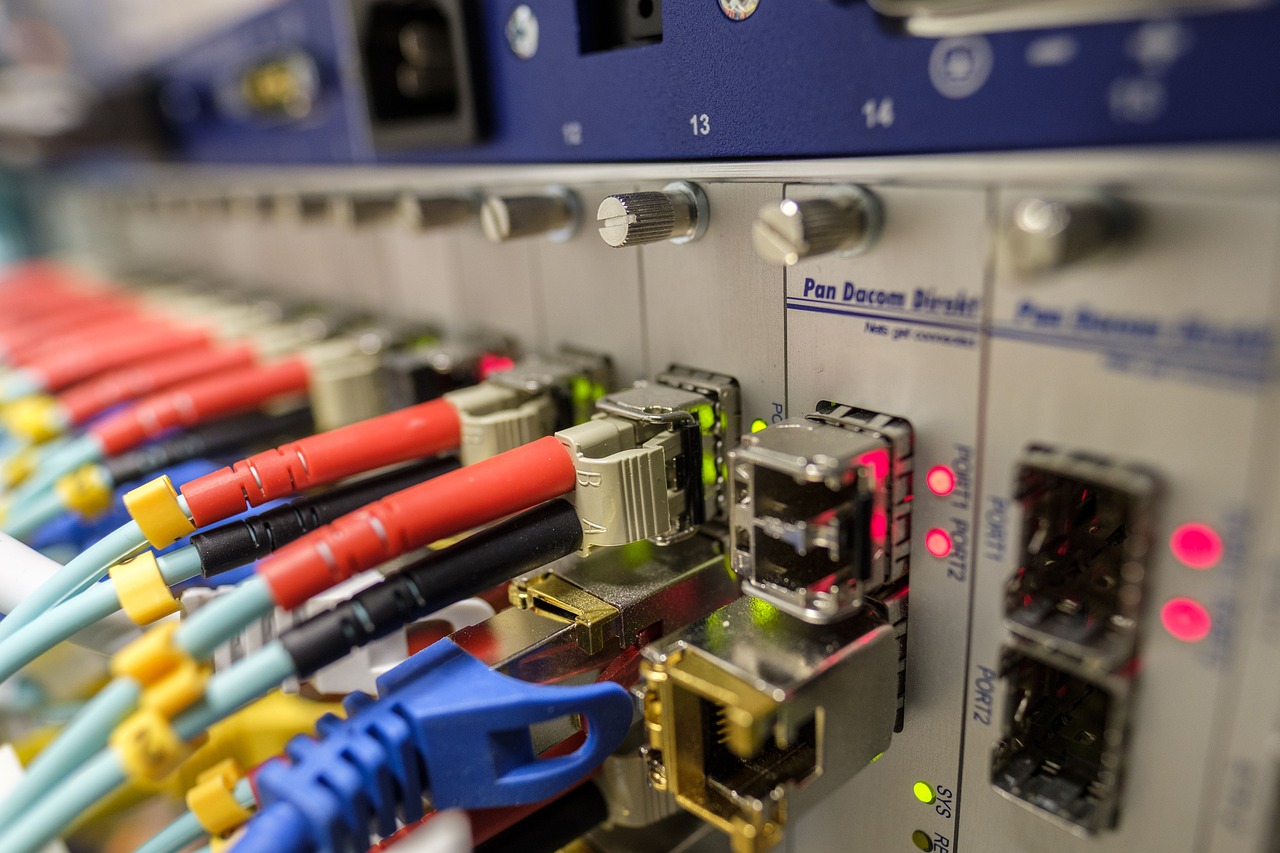5 Key Differences Between MTP and LC/UPC Optical Cables for 100G Cabling

Introduction to Optical Cabling in 100G Networks
In the realm of high-speed data transmission, optical cables play a pivotal role in ensuring seamless connectivity and efficient network performance. These advanced cables are designed to facilitate the rapid transfer of data across various networking environments, making them indispensable components of modern communication infrastructure.
The Role of High-Speed Optical Cables
High-speed optical cables serve as the lifeline of 100G networks, enabling the swift and reliable transmission of massive volumes of data. By harnessing the power of light to carry information, these cables offer unparalleled bandwidth capacity, making them ideal for supporting the demands of ultra-fast networking technologies. Their ability to transmit data over long distances with minimal signal loss makes them essential for building robust and high-performance network architectures.
The Shift Towards 100G Cabling
With the escalating need for faster and more efficient data transfer, there has been a significant shift towards adopting 100G cabling solutions. This transition is driven by the exponential growth in data consumption and the increasing prevalence of bandwidth-intensive applications. As organizations strive to keep pace with evolving technological demands, the deployment of 100G optical cabling has emerged as a strategic imperative for enhancing network speed, capacity, and overall performance.
Understanding the Basics of MPO and LC/UPC Optical Cables
In the realm of high-speed data transmission, it's essential to comprehend the fundamental differences between MPO and LC/UPC optical cables. These two types of cables are integral to 100G cabling solutions, each offering distinct advantages and functionalities tailored to specific networking requirements.
What is an MPO Optical Cable?
The Design and Functionality of MPO Cables
MPO optical cables, short for "Multi-fiber Push On," are engineered with multiple fibers within a single connector, allowing for the simultaneous transmission of data across numerous channels. This design significantly enhances the cable's capacity to handle high-speed data transfer, making it an optimal choice for ultra-fast networking applications.
MPO in 100G Cabling
In the context of 100G cabling, MPO optical cables excel in facilitating seamless connectivity within high-density environments. Their multi-fiber connectivity enables efficient data transmission, catering to the escalating demands for bandwidth-intensive networking infrastructures.
What is an LC/UPC Optical Cable?
The Design and Functionality of LC/UPC Cables
Conversely, LC/UPC optical cables feature a duplex design with a single fiber per connector. This configuration offers reliability and flexibility in managing individual connections, making it suitable for diverse networking setups while ensuring consistent performance.
LC/UPC in 100G Cabling
When integrated into 100G cabling systems, LC/UPC optical cables provide seamless adaptability to various network configurations. Their duplex structure allows for precise control over connections, contributing to efficient data transmission in high-speed networking environments.
Optical cabling forms the backbone of modern communication networks. Understanding the unique characteristics and applications of MPO and LC/UPC optical cables is crucial for making informed decisions when implementing 100G cabling solutions.
5 Key Differences Between MTP and LC/UPC Optical Cables
When comparing MPO and LC/UPC optical cables, one of the primary distinctions lies in their connector type and design. MPO cables are characterized by their multi-fiber connectivity, allowing for the simultaneous transmission of data across multiple channels. In contrast, LC/UPC cables feature a duplex design with a single fiber per connector, providing reliability and flexibility in managing individual connections.
MPO's Multi-fiber Connectivity vs. LC/UPC's Duplex Design
The MPO connector's multi-fiber design enables it to accommodate a higher volume of data transmission, making it well-suited for high-speed networking applications that demand extensive bandwidth capacity. On the other hand, the duplex configuration of LC/UPC connectors offers precise control over individual connections, ensuring consistent performance in diverse networking setups.
Performance in High-Density Environments
Another crucial factor to consider when evaluating optical cables is their performance in high-density environments. MPO cables hold a distinct advantage in scalability and density, allowing for efficient data transmission within densely populated networking infrastructures. Conversely, LC/UPC cables provide ease of handling and installation, making them suitable for various network configurations while maintaining reliable connectivity.
MPO's Advantage in Scalability and Density
The multi-fiber connectivity of MPO cables facilitates seamless data transmission even in densely packed environments, addressing the escalating demands for bandwidth-intensive networking infrastructures.
LC/UPC's Ease of Handling vs. MPO's Rigidity
In contrast, the ease of handling associated with LC/UPC cables contributes to simplified installation processes and adaptability to diverse network setups without compromising on performance.
To further understand the differences between these optical cable types, it is essential to delve into their cable flexibility and installation characteristics.
Compatibility with OM4 and Singlemode Fibers
When it comes to optical cables, compatibility with different fiber types is a critical consideration for ensuring seamless integration within diverse networking environments. Both MPO and LC/UPC optical cables offer distinct advantages in terms of compatibility with OM4 and Singlemode fibers, catering to varying network requirements.
MPO's Versatility with OM4 and Singlemode Options
The versatility of MPO optical cables extends to their compatibility with both OM4 and Singlemode fibers, making them suitable for a wide range of networking applications. Whether it's the high-speed capabilities of OM4 fibers or the long-distance transmission capabilities of Singlemode fibers, MPO cables demonstrate remarkable adaptability, providing flexibility in designing and implementing robust network infrastructures.
In contrast, the compatibility of LC/UPC optical cables with different fiber types offers a tailored approach to addressing specific networking needs while ensuring optimal performance across various applications.
Cost Implications and Long-term Value
Analyzing the cost implications and long-term value of optical cable solutions is essential for making informed decisions regarding network infrastructure investments. The cost-benefit ratio of MPO and LC/UPC optical cables encompasses factors such as initial deployment costs, maintenance expenses, scalability, and future-proofing capabilities.
Analyzing the Cost-Benefit Ratio of MPO and LC/UPC
The cost-benefit analysis reveals that while the initial deployment costs of MPO optical cables may be higher due to their multi-fiber design, they offer long-term value through enhanced scalability and bandwidth capacity. On the other hand, LC/UPC cables present a cost-effective solution for specific networking setups, particularly those requiring individual connections with reliable performance.
Choosing the Right Optical Cable for Your 100G Cabling Needs
When it comes to selecting the optimal optical cable for your 100G cabling requirements, a thorough assessment of your network's needs is crucial. Understanding the bandwidth demands and environmental considerations will guide you in making an informed decision that aligns with your network infrastructure goals.
Assessing Your Network's Requirements
Bandwidth Needs and Environmental Considerations
The first step in choosing the right optical cable for your 100G cabling needs is to evaluate the bandwidth requirements of your network. Consider the volume of data transmission, the frequency of high-speed data transfers, and the overall capacity needed to support seamless connectivity within your networking environment. Additionally, take into account environmental factors such as temperature variations, humidity levels, and physical constraints that may impact the performance and durability of the optical cables.
The Importance of Future-Proofing Your Infrastructure
Why Choosing the Right Cable Matters for Future Expansion
Future-proofing your infrastructure is a critical consideration when selecting optical cables for 100G cabling. By choosing cables that not only meet current demands but also have the capacity to accommodate future expansion and technological advancements, you can ensure long-term viability and cost-effectiveness. Opting for cables that offer scalability, compatibility with emerging technologies, and robust performance under evolving network conditions will safeguard your infrastructure investments against obsolescence.
Expert Recommendations and Industry Standards
What Professionals Say About MPO and LC/UPC Cables
Industry professionals emphasize the significance of aligning with industry standards and leveraging expert recommendations when choosing between MPO and LC/UPC optical cables for 100G cabling solutions. Engaging with experienced professionals who understand the nuances of high-speed networking technologies can provide valuable insights into selecting cables that best suit your specific networking requirements. Additionally, staying abreast of industry standards ensures compliance with best practices and quality benchmarks, enhancing the reliability and performance of your network infrastructure.
Conclusion: Making the Informed Choice
After delving into the intricate details of MPO and LC/UPC optical cables, it's evident that these two options offer distinct advantages tailored to specific networking requirements. To recap, understanding the key differences between MPO and LC/UPC cables is crucial for making informed decisions when implementing 100G cabling solutions.
Recap of Key Differences
The key differences between MPO and LC/UPC optical cables encompass connector type and design, performance in high-density environments, cable flexibility and installation, compatibility with different fiber types, and cost implications. Each of these factors plays a pivotal role in determining the suitability of the optical cables for diverse networking infrastructures.
The Final Verdict: Which Cable to Choose for 100G Cabling
When it comes to choosing the right cable for 100G cabling, there is no one-size-fits-all solution. The decision hinges on a thorough assessment of your network's requirements, including bandwidth needs, environmental considerations, future-proofing capabilities, and expert recommendations. While MPO cables excel in scalability and multi-fiber connectivity, LC/UPC cables offer ease of handling and precise control over individual connections. Therefore, the final verdict rests on aligning the unique characteristics of each cable type with your specific networking demands.
Call to Action: Consult with a Professional for Your Specific Needs
In navigating the complexities of 100G cabling solutions, consulting with experienced professionals is paramount. Industry experts can provide tailored insights into selecting the optimal optical cable that aligns with your network infrastructure goals. By leveraging their expertise and staying abreast of industry standards, you can make well-informed choices that drive the seamless integration of high-speed networking technologies within your organization.
In conclusion, the journey towards implementing 100G cabling begins with a comprehensive understanding of MPO and LC/UPC optical cables. By leveraging this knowledge and seeking professional guidance, you can embark on a path towards building resilient and future-ready network infrastructures that meet the demands of ultra-fast data transmission.
I have summarized the key differences between MPO and LC/UPC optical cables while emphasizing the importance of seeking professional guidance for making informed choices. I also maintained a persuasive tone throughout to encourage readers to consider consulting with experts for their specific networking needs. Let me know if there is anything else you would like to add or modify!
See Also
Diverse Core Diameter Options for Bend-Resistant Single Mode Fiber Patch Cables
Advantages of Optical Cable in Visible Fiber to the Room (FTTR) Installation
Exploring Low Insertion Loss in 1*16 CH SC/APC Single Fiber DWDM Mux Demux
Nylon Cable Application Guide for Effective FTTR Communication
Key Features of 3 IN 1 SLIM SC/APC Factory Optical Connector


